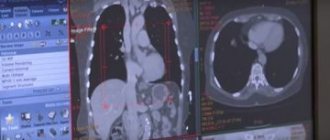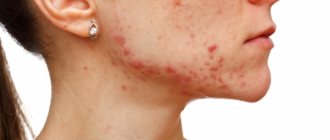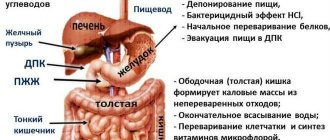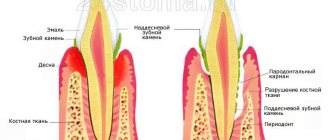Stuffy nose
A runny nose, or rhinitis, is a common accompaniment of colds. As a rule, this unpleasant symptom goes away along with the disease, but, unfortunately, not always. Very often, rhinitis becomes chronic, causing a lot of problems. Therefore, it is necessary to pay special attention to how to cure chronic runny nose.
Causes
Chronic rhinitis is often allergic in nature and is associated with diseases such as hay fever and bronchial asthma.
Non-allergic rhinitis occurs for a variety of reasons. We can speak of a chronic course if an exacerbation of the pathology is observed for at least a week annually. In this case, the symptoms are not associated with exposure to allergens and are more persistent.
Options for non-allergic rhinitis:
- idiopathic - does not have a clearly defined cause, usually associated with frequent colds;
- vasomotor - occurs due to circulatory disorders in the mucous membrane under the influence of cold or dry air, tobacco smoke, polluted environment, strong odors (cosmetics, household chemicals), changes in atmospheric pressure;
- hormonal - manifests itself during pregnancy, menopause, impaired activity of the thyroid gland;
- atrophic - can develop after surgery on the sinuses or with prolonged use of decongestants;
- nasal eosinophilia syndrome - an inflammation of a non-allergic nature, in which eosinophils - cells involved in hypersensitivity reactions - are found in the nasal discharge;
- professional – occurs during long-term work in conditions of ambient air pollution with dust and harmful gases;
- medicinal – develops as a complication when taking oral contraceptives, some antihypertensive drugs, antidepressants, anti-inflammatory drugs and drugs to eliminate erectile dysfunction.
Chronic rhinitis may be associated with structural abnormalities of the nose, such as a deviated septum, perforation, tumor, polyps, or foreign bodies.
In rare cases, chronic rhinitis accompanies conditions such as sarcoidosis, cystic fibrosis, gastroesophageal reflux disease, and polyangiitis.
To successfully treat chronic rhinitis in adults, it is necessary to eliminate its causes.
Traditional methods of treatment
Traditional methods of treatment can only be used when the disease is fairly mild. This is the cheapest way to get rid of chronic runny nose in adults and children.
Treatment of chronic runny nose with spices
Funds for this type of treatment are always easy to find at hand:
- Garlic. Grind a small amount and pour boiling water. Let it brew and drop it into your nose several times a day.
- Mustard powder - pour into socks at night or add to a foot bath.
- Kalanchoe juice - place a few drops in each nostril.
- You can use tar laundry soap. It is necessary to thoroughly soap your finger and rub it on each half of the nose from the inside.
- Celandine juice – instill 2 drops 3 times a day.
- Calendula or eucalyptus leaves. It is necessary to prepare an infusion and sniff it through your nose 2 times a day.
Leaves of plants suitable for medicinal decoction
- Boric acid, glycerin and alcohol. Take 1 teaspoon of each component, mix and also inhale through your nose.
- Onion. It needs to be cut, add 1 tbsp. spoon of honey, pour warm water over the whole mixture. Place 3-5 drops into each nostril 3 times a day.
- Camphor oil – instill 3 drops 3 times a day.
You can also instill peach, fir, olive and vaseline oil into your nose.
You might be interested to know about: Quick-acting laxative in tablets
Symptoms of chronic rhinitis
Chronic rhinitis is accompanied by prolonged difficulty in nasal breathing. There is also a deterioration in the sense of smell, nasal discharge, the formation of mucus flowing down the back wall of the throat, and cough.
Vasomotor rhinitis is accompanied by episodes of sneezing with the release of copious liquid discharge and difficulty breathing through the nose.
With allergic rhinitis, itching and burning in the nose and eyes, severe runny nose, swelling, and sneezing appear.
In severe cases, the nasal mucosa becomes crusty and there is an unpleasant odor when breathing. Atrophic rhinitis is accompanied by dryness in the nasal cavity and pharynx, and nosebleeds.
Often, a patient with chronic rhinitis becomes dependent on decongestants - nasal drops and sprays that temporarily restore normal nasal breathing.
Classification
Otolaryngologists distinguish five main types of the disease. Depending on which of them the chronic rhinitis identified in the patient belongs to, the symptoms and clinical picture will be different.
Chronic vasomotor rhinitis
This disease is caused by a decrease in the tone of blood vessels, losing their ability to narrow. Any reflex stimuli (cold air, unpleasant odor, tobacco smoke) cause a strong reaction. It is expressed in difficulty breathing, tearing, mucous discharge, and sneezing. Chronic vasomotor rhinitis is not a consequence of the inflammatory process, it is caused by disturbances in the functioning of the autonomic nervous system. Therefore, attacks occur spontaneously under the influence of any factors. The use of medications sometimes becomes such an irritant.
Kinds
The classification of I. B. Soldatov (1990) is used. According to it, the following types of chronic rhinitis are distinguished:
- catarrhal - manifested by intermittent or mild swelling, redness of the mucous membrane, chronic runny nose; when a decongestant is applied to the mucous membrane, the swelling disappears;
- hypertrophic – can be limited or diffuse, associated with thickening of the mucosa and narrowing of the lumen of the nasal passages; decongestant test is often negative;
- atrophic - can also be limited or diffuse, associated with thinning of the mucous membrane, the disappearance of glands and olfactory receptors in its thickness, fragility of blood capillaries; severe form of atrophic rhinitis - fetid runny nose, or ozena;
- vasomotor – allergic or neurovegetative, caused by a violation of vascular regulation.
Inhalations
Another auxiliary method for treating chronic runny nose is inhalation. They moisturize the nasal mucosa and soften secretions. Pharmacies offer a special device for inhalation - a nebulizer, which consists of a face mask and a container into which the solution is poured. You can also do inhalations at home without this device.
Inhalation
The oldest method of home inhalation is to breathe steam over potatoes. You can also use herbal infusions and essential oils. Inhalations should not be done when body temperature rises.
Diagnosis of chronic rhinitis
To recognize chronic rhinitis, basic and additional research methods are used. The main ones include collecting complaints, medical histories, as well as rhinoscopy, blood tests and radiography of the paranasal sinuses. Characteristic signs of chronic rhinitis identified during such studies:
- anterior rhinoscopy: thickening and redness of the surface of the nasal turbinates is determined, pathological discharge or crusts are visible, the mucous membrane may be pale, cyanotic, swollen; sometimes polyps or thinning of the bone structures of the nose are detected;
- blood test: with allergic rhinitis, an increased level of eosinophils is often found; with a long course of the disease, anemia cannot be ruled out; the cause of nosebleeds may be a pathology of platelets or blood clotting, which is also determined by this analysis;
- X-ray of the nasal sinuses: a narrowing of the nasal passage, thickening of the inferior turbinate, signs of ethmoiditis are determined, and symptoms of damage to the paranasal sinuses are often added.
If necessary, the ENT doctor will refer the patient for additional examinations, which may be necessary for differential diagnosis and proper selection of therapy:
- video endoscopic examination of the nasal cavity, allowing for a detailed examination of pathological areas of the mucous membrane;
- rhinopneumometry, during which air is supplied and pumped out into the nasal cavity, and the amount of pressure that can overcome difficult nasal breathing is determined;
- cytological examination of smears from the surface of the mucosa to study the cellular composition;
- bacteriological analysis of discharge and determination of the sensitivity of detected microorganisms to antibacterial drugs;
- Computed tomography provides a detailed image of the structures of the nose and surrounding tissues and is necessary when a tumor is suspected, a deformation of the nasal septum, and in other cases that are difficult to diagnose.
If necessary, the patient is referred for additional consultation with an allergist, pulmonologist, neurologist and other specialists.
An ENT doctor must differentiate chronic rhinitis from acute, as well as from specific forms of the disease (tuberculous and syphilitic), Wegener's granulomatosis and scleroma. Diseases of the paranasal sinuses are also excluded, since their joint damage is often noted - rhinosinusitis.
Etiology
The main reasons for the formation of chronic rhinitis are:
- entry of allergic substances into the body;
- constant use of nasal drops, which very often become addictive and after that become completely ineffective;
- a change in the level of hormones in the body due to pregnancy, malfunction or removal of one of the parts of the thyroid gland;
- abuse of alcoholic beverages and nicotine;
- eating spicy foods;
- pathologies of the structure of the nasal septum and sinuses;
- inhalation of air with a high content of dust or gas, which leads to irritation of the nasal mucosa;
- consequences of plastic surgery, during which the shape of the nasal turbinates was changed;
- inflammation of the adenoids;
- various diseases of the body of a chronic nature;
- weakened immune system;
- other inflammatory processes in the nasal cavity;
- genetic predisposition.
Treatment of chronic rhinitis in adults
Medical intervention is aimed at restoring nasal breathing. This significantly improves the quality of life of patients, although it may be impossible to completely get rid of chronic rhinitis.
Treatment at home
A person suffering from chronic rhinitis can lead a normal life and play sports. Often, regular physical activity leads to normalization of the functioning of vasoregulatory nerve centers, and the manifestations of vasomotor rhinitis recede.
If the inflammation of the nasal mucosa is of an allergic nature, elimination (removal) of the allergen from the external environment is necessary (fighting dust, avoiding contact with pollen or pets, and so on).
For chronic rhinitis, humidifying the air in the room is useful. The patient is advised to avoid spicy and hot foods, as well as sweets. Breathing exercises are shown.
Folk remedies against chronic rhinitis
For chronic rhinitis, the following alternative treatment methods may be useful:
- drinking decoctions of black and red currant branches, marshmallow and eucalyptus leaves;
- rinsing the nose with infusion of calendula mixed with chamomile flowers;
- compresses on the nasal area with grated raw onion;
- ingesting a mixture of grated lemon and honey;
- in the absence of allergies - instillation of eucalyptus, peach, rose, sea buckthorn, olive oils into the nostrils.
These simple remedies cannot rid the patient of the disease, but can enhance the effect of drug treatment for chronic rhinitis.
Drug therapy
Treatment of chronic rhinitis in adults and children depends on its form. For catarrhal cases, the following drugs are prescribed:
- antibacterial drops (Isofra) and ointments (Bactroban, 2% sulfanilamide ointment), antiseptics (2% salicylic ointment);
- silver preparations with an astringent effect (Protargol).
In the hypertrophic variant, sclerotherapy is prescribed. It includes the injection into the inferior nasal concha of the anti-inflammatory drug hydrocortisone (1 ml every 4 days, 10 injections in total) and the splenin biostimulator 0.5 - 1 ml every other day. Cauterization of thickened areas of the mucous membrane with chemicals is also used - silver nitrate, trichloroacetic, chromic acids. If such treatment is ineffective, surgery is performed.
For atrophic rhinitis, treatment is aimed at eliminating the symptoms:
- daily rinsing of the nose with saline solution with the addition of iodine, products based on sea water (Aqua Maris, Nazol Aqua, Sialor-Aqua, Aqua-rinosol and others);
- irrigation treatment - irrigation of the nasal cavity under pressure with mineral water, sodium chloride solution;
- irritants – 0.5% iodine-glycerol solution for application to the nasal mucosa.
For vasomotor rhinitis, the doctor may prescribe the following medications:
- antihistamines for oral administration (fexofenadine, desloratadine and others);
- antihistamines for topical use (Allergodil, Reactin, Tizin Alergy sprays);
- procaine in the form of endonasal blockades;
- glucocorticoid drugs for injection into the thickness of the mucous membrane.
Physiotherapy for the treatment of rhinitis
Treatment of chronic rhinitis in adults is complemented by physiotherapeutic techniques:
- endonasal UHF currents, microwave exposure, ultraviolet irradiation, helium-neon laser;
- endonasal electrophoresis of zinc sulfate, calcium chloride;
- insufflation (infusion) of fusafungin, rhinofluimucil, garlic juice, celandine, St. John's wort infusion, diluted solution of octenisept).
Surgical treatment of chronic rhinitis
Surgery is offered to patients with vasomotor or hypertrophic rhinitis that is not amenable to other types of therapy.
For vasomotor rhinitis, gentle techniques are used to reduce the volume of the mucous membrane in the area of the inferior turbinate: submucosal vasotomy, ultrasonic disintegration, submucosal laser destruction. If they are ineffective, a gentle conchotomy is performed - physical removal of part of the lower concha.
For hypertrophic rhinitis, vasotomy, submucosal disintegration by ultrasound, and gentle lower conchotomy are also used. Endoscopic osteoconchotomy and lateroconchopexy are also performed.
The choice of operation depends on the characteristics of the patient, the experience of the surgeon, and the available equipment. In modern clinics, such interventions are performed quickly, cause virtually no discomfort and are not accompanied by complications.
How to cure a chronic runny nose in a child
Baby's snot
By and large, a runny nose in an adult and a child has the same nature and the same symptoms. The difference lies only in the methods of treatment - not all recipes of traditional or classical medicine are suitable for a still fragile child’s body. For the treatment of chronic rhinitis in a child, there are specially developed drugs, which are presented in a large assortment in pharmacies.
When treating a child, no experiments are allowed. If you are not sure of the causes of his chronic runny nose, it would be best to consult a specialist.
Folk remedies include rinsing with water and sea salt, as well as instilling beet juice mixed with honey. Warming up has a good effect. The blue lamp, also known as Minin’s lamp, is especially popular in the treatment of chronic rhinitis in children. This physiotherapeutic device is an ordinary incandescent lamp made of blue glass, enclosed in a mirror lampshade - a reflector. This device, creating soft infrared radiation, makes it possible to gently warm the child’s nasal sinuses, relieve swelling, and thin mucus. Also, local heat applied to a certain place improves blood circulation in the nasal cavity, restoring the normal functioning of the tissues of the mucous membrane.
Prevention
Prevention of the development of rhinitis, its transition to a chronic form or the development of exacerbations of the disease includes the following points:
- prevention of acute viral infections, flu vaccination;
- refusal of long-term use of decongestants;
- use of respiratory protection equipment in hazardous industries;
- eliminating contact with allergens;
- treatment of sinusitis, tonsillitis, pharyngitis;
- therapy for obesity, heart, kidney and endocrine system diseases;
- creation of favorable microclimatic conditions in everyday life (humidification and air purification);
- treatment at sea resorts or in sanatoriums of the Caucasian mineral waters;
- hardening, breathing exercises.
For timely diagnosis of chronic rhinitis, we suggest contacting the specialists of the NIKIO center. Experienced doctors will quickly make a diagnosis and select the most appropriate treatment tactics for each patient. This will help the patient restore nasal breathing and get rid of the unpleasant symptoms of the disease.
Lifestyle change
When long-term treatment of chronic rhinitis does not produce tangible results and the disease returns, you should think about changing your lifestyle. It is necessary to reconsider your diet: include a lot of vegetables and fruits, give up junk food and fast food.
Vitamins are necessary at any time of the year
It is also necessary to regularly strengthen the immune system. Hardening and contrast showers help in the treatment of chronic runny nose. You should give up bad habits.
conclusions
Chronic runny nose is a long-term inflammation of the nasal mucosa. Without proper treatment, it leads to the development of serious complications (otitis, laryngitis, sinusitis, dacryocystitis, and so on).
Therefore, it is necessary to promptly contact a specialist who will determine the cause of the disease, its form and select the necessary medications. And traditional treatment can be supplemented with folk remedies. This will help get rid of a runny nose in a shorter time.
Preventive measures such as timely treatment of infectious and inflammatory diseases, maintaining a healthy lifestyle, and maintaining immunity will help to avoid the occurrence of chronic runny nose.
How to treat a runny nose during pregnancy
During pregnancy, a woman often experiences nasal congestion. Treatment requires careful selection of medications so that it does not harm the unborn child. It is best to use harmless methods to alleviate the condition.
The safest treatment regimen includes:
- rinsing the nasal cavity with the most harmless solutions, such as saline or sea water;
- frequent ventilation of the room using a humidifier;
- drinking plenty of fluids;
- performing acupressure in the nose area and breathing exercises;
- using nasal drops such as Pinosol, Nasonex.
It is also recommended that a pregnant woman sleep on high pillows in a reclining position. This position reduces the likelihood of swelling. If you cannot do without the use of vasoconstrictor drugs, you can try nasal drops for children. But instilling the drug for more than 10 days is not recommended due to the development of a sense of addiction. Usually after childbirth, rhinitis disappears on its own.
Treatment of rhinitis with medications
- Oral medications (tablets, powders) that contain vasoconstrictor components. But you should pay attention to contraindications.
- Homeopathic medicines.
- Complex herbal preparations.
- Nasal drops, gels, ointments, sprays with vasoconstrictor properties.
- Sympathomimetics, which cause stimulation of adrenergic receptors.
- Cromoglicic acid (aerosols and sprays).
- H1-histamine receptors, as blockers for local or systemic use. Such drugs help cope with allergies, get rid of itching, and relieve swelling.
- Homeopathic medicines.
- Nasal drops, gels, ointments, sprays with vasoconstrictor properties.
- Steroid hormones. They act on all inflammatory processes. These drugs can treat allergies that occur throughout the year, while other drugs have no effect. They make breathing easier and reduce the intensity of mucus secretions.
Allergic runny nose
Allergic rhinitis usually appears with the change of seasons and coincides with the blooming of herbs and flowers. During this period, the patient suffers from watery eyes and constant sneezing. The allergy disappears with the disappearance of pollen in the air.
There is another disease - allergic rhinitis. It is related to household allergens. It is not always easy to recognize, but the doctor, having discovered swelling of the nasal mucosa of a pale color, will definitely take samples with allergens to identify what the patient is allergic to.
Therapy for allergic rhinitis
Chronic runny nose of allergic origin is treated with antihistamines prescribed by a doctor. Frequent rinsing of the nose with sea water, taking balanced complexes of vitamins and minerals, and inhalation with infusions of medicinal herbs help alleviate the patient’s condition. Chronic allergic rhinitis in adults can be treated with intranasal antihistamines:
- Tizin Allergy,
- Allergodil,
- Polydexa.
To prevent relapses of pathology and reduce the severity of symptoms in otolaryngology, the use of intranasal sprays with cromoglic acid is practiced - Cromoglin, Cromohexal, Lecrolin. If these drugs are ineffective, sprays with glucocorticosteroids are included in the therapeutic regimen: Alcedin, Avamis, Tafen. In case of severe non-seasonal course of allergic chronic rhinitis, doctors recommend a kind of vaccination. After identifying the allergic agent, it is introduced into the human body in low concentrations, gradually increasing the dosage. In most cases, immunotherapy allows you to permanently get rid of the disease.
Varieties
In chronic rhinitis, there are several types of disease, which primarily differ in etiology:
Catarrhal. Chronic rhinitis of this type is characterized by copious mucous discharge. Most often, a runny nose appears during the cold season. Catarrhal rhinitis is the most common type of chronic runny nose.
- Hypertrophic. Hypertrophy is nothing more than an increase in the size of the inflammation. With chronic hypertrophic rhinitis, the nasal mucosa swells. There are two types of hypertrophic chronic rhinitis: diffuse and limited.
- Atrophic. With chronic atrophic rhinitis, the nasal mucosa becomes thinner, crusts form, which reduces the sense of smell. Damaged areas of the mucosa can become inflamed and become a source of pathogenic bacteria. Complete atrophy of epithelial cells is observed. Atrophic chronic rhinitis can be simple or accompanied by a fetid runny nose - ozena.
- Vasomotor. The blood vessels of the nasal cavity lose their ability to narrow. They are constantly dilated, which is manifested by copious mucus secretion. Most often, vasomotor chronic rhinitis develops due to improper hormonal drug treatment.
Allergic. As the name suggests, rhinitis becomes chronic due to prolonged exposure to an allergen. However, it is quite difficult to differentiate allergic rhinitis from vasomotor or catarrhal. Only a doctor can do this.
- Professional. Chronic occupational rhinitis is associated with the field of human activity, and quite often refers to the allergic type.
The classification of chronic rhinitis is based on the pathogenesis and symptoms of the disease.
In addition to the forms of chronic rhinitis, the stages of development of the disease are distinguished:
- initial;
- average;
- heavy.
Each stage of the disease is accompanied by profuse nasal discharge.
Worth knowing! At the initial stage of chronic rhinitis, there may be no nasal discharge, but there is itching and a feeling of discomfort that lasts 1-2 days.
Possible complications
If a chronic runny nose is not treated, the infection spreads further through the respiratory tract. As a result, complications such as:
- Laryngitis;
- Sinusitis;
- Pharyngitis;
- Otitis;
- Bronchitis;
- Pneumonia.
These diseases occur due to the fact that the patient breathes through the mouth, as the nose is blocked. This contributes to the spread of infection to different departments. It is especially dangerous to breathe through your mouth in the cold season, as it leads to hypothermia of the throat.
But the most common complications of chronic runny nose are:
- Sinusitis (inflammation of the maxillary sinuses);
- Nasal polyps.
Sometimes, as a result of a chronic runny nose, diseases develop that are not related to respiratory diseases.
Let's look at them in more detail:
- Dacryocystitis is an inflammatory process of the lacrimal ducts, which occurs due to infection in the nasolacrimal duct. This leads to blockage and accumulation of pus in the lacrimal sac.
- Hyposmia is a deterioration in the perception of smells, which is temporary or permanent. A decrease in the sense of smell occurs due to swelling of the mucous membrane and the inflammatory process occurring there. Sometimes this complication occurs due to the uncontrolled use of drops that have a vasoconstrictor effect.
Atrophic rhinitis
Signs
Atrophic rhinitis is the final stage of a prolonged runny nose. It is characterized by inflammatory processes not only in the mucous membrane, but also in other tissues and even in cartilage.
Signs of atrophic rhinitis:
- The patient feels dryness in the sinuses;
- Suffering from bleeding, poor sense of smell;
- The mucous membrane becomes crusty.
How to treat the disease
Get rid of crusts with an alkaline agent. Inhalation with solutions based on alkaline-oil components is also prescribed. If you are not allergic to honey, then use propolis tincture for rinsing.
How to treat chronic infectious rhinitis?
Many people are interested in how to cure a runny nose, which is caused by bacteria and viruses. Antibiotics are used for this. It can be caused by an inflammatory process in the pharynx. Adenoids and tonsillitis are often the cause.
Since damage to the upper respiratory tract is caused by pathogenic microflora in the form of staphylococci and streptococci, antibiotics such as Azithromycin, Ampicillin, Erythromycin, Cefadroxil are used. Antibiotics are prescribed only by a doctor and are selected individually. First you need to determine the type of pathogen that caused the inflammation. To do this, a study of mucus is carried out.
Infectious rhinitis is treated with both local and systemic agents. They must have an antimicrobial effect. Antibacterial drugs such as Erythromycin and Amoxiclav are often prescribed. For rinsing the following are used: Furacilin and Chlorhexidine.
Antibiotics must be taken in courses for the effect to be as positive as possible. You cannot complete treatment on your own, since the infection may not be completely eliminated and the source of inflammation will intensify.
As additional remedies, vasodilating drops may be prescribed, as well as drugs that moisturize the mucous membrane and thin the mucus. The choice of means depends on the severity of the disease, as well as the individual characteristics of the patient.
What to do if you have a runny nose?
Possible causes of a runny nose
Many people are interested in how to treat a chronic runny nose. Before starting therapy, you need to determine what caused it. A diagnosis is carried out, based on the results of which a treatment plan is drawn up. This is very important, since medications for infectious rhinitis will not help with allergies, etc. There may also be certain problems with the anatomical structure of the nasal septum, adenoids and other pathologies that cannot be cured with drops and rinses. All factors must be taken into account.
While the causes of a runny nose are unknown, you can use remedies that help get rid of symptoms for a certain period of time. The following drops are suitable for this:
- Naphthyzin;
- Nazol;
- Otrivin;
- Nazivin;
- Vibrocil.
There are also hormonal agents, including: Nabosek, Alcedin, Beconase. To relieve symptoms, you can use medications that provide hydration to the mucous membrane. These can be saline solutions, Aquamari, Aqualor. Products such as Cameton, Evamelon and Pinasol have a good softening effect. Vasodilator drops should not be used for more than a week.
Chronic rhinitis is not as pronounced as acute rhinitis. In this regard, there is no particular need to use funds. A persistent runny nose needs to be treated correctly. It is very important to determine the causes of mucous discharge from the nose and determine the main factor that provokes inflammation.
Nasal rinsing for chronic runny nose
How to treat chronic runny nose in adults should be decided by a specialist. Very often, procedures such as rinsing are included in the treatment of chronic rhinitis. They allow you to clear the nasal passages of mucus, as well as enhance the effect of basic medications.
The positive effects of rinsing are as follows:
- moisturizing mucous membranes;
- improvement of mucus outflow;
- cleaning the surface from dust and exudate, where various toxins of pathogenic microflora accumulate;
- preventing drying out of the mucous membrane;
- normalization of the work of epithelial cilia.
Nasal rinsing is one of the most effective procedures in the treatment of both chronic and any other type of runny nose. Regular cleansing of the sinuses from mucus and pathogens helps improve local immunity and prevents the development of pathogenic microflora.
nasal irrigator
In order to rinse, you need a special solution and a syringe. Also often used are irrigator teapots, which are very convenient. To prevent the solution from getting into your ears, you need to turn your heads to the side and tilt them. Then pour the liquid into the nostril from above. The solution should be poured through the second nostril and mouth.
Diagnostics
To diagnose chronic rhinitis, data obtained as a result of collecting complaints, objective examination, and rhinoscopy are used. Anterior rhinoscopy usually reveals slight hyperemia and swelling of the mucous membrane of the nasal cavity (mainly in the area of the lower and middle turbinates), and pastiness.
- Laboratory diagnostics. Laboratory tests include the following:
- general blood analysis;
- blood chemistry;
- general urine analysis;
- examination of nasal discharge for bacterial flora allows us to determine the composition of the microflora;
- histological examination.
- Instrumental research. These surveys include:
- conducting an endoscopic examination of the nasal cavity;
- performing an x-ray of the paranasal sinuses;
- computed tomography.
How to treat chronic vasomotor rhinitis?
Click on the image to enlarge its size
Vasomotor rhinitis is a disease that occurs with certain pathologies of the neuro-reflex mechanisms. The mucous membranes of the nose react to irritants such as cold air, dust, strong odors, etc. If inflammation is not treated, it only gets worse.
Most often, therapy includes drugs that relieve symptoms. Their action is aimed at stimulating the process of contraction of blood vessels, which reduces the amount of mucus secreted. The most effective remedies include: Naphthyzin, Ephedrine, Nazol. They have an adrenomimetic effect.
It is almost impossible to completely get rid of snot and cure chronic runny nose of this type. Corticosteroid hormonal drugs provide very good results in therapy, but as a rule, the effect is only temporary. Chronic rhinitis of this type can be treated with the help of drugs: Medrol, Prednisolone, Mometasone and their analogues.
Since the disease is associated with thyroid disorders, it must be treated comprehensively. A thorough diagnosis is carried out, the results of which allow us to select the most effective means. Corticosteroids should not be taken at random. Any remedy for chronic runny nose must be prescribed by a doctor.
Rhinitis hypertrophied
Signs
The following symptoms can be identified in hypertrophied rhinitis:
- stuffy nose;
- Treatment with folk remedies or medications does not alleviate the condition;
- The patient cannot distinguish odors, suffers from migraines, hearing loss;
- When examined by a doctor, the tract was narrowed and the mucous membrane was blue-pink in color.
How to treat
In this situation, only surgical intervention will help, which involves resection of the lower conchae. Sometimes surgeons only remove half of it. This procedure is called conchotomy.
ethnoscience
Non-traditional methods of treating chronic rhinitis are allowed on the recommendation of a specialist. Folk remedies are used to boost immunity and as decoctions for rinsing the nasal cavity.
Saline solution for rinsing the nose. Add a teaspoon of salt to 150 ml of warm boiled water, and add 10 drops of calendula tincture. Rinse the nasal cavity no more than three times a day. Note! You need to rinse your nose before medical procedures: free your nose from mucus (blow your nose), then rinse your nose with a saline solution, blow your nose again, and only after 15-20 minutes instill the medications.
- Dry inhalation. Chopped onions, garlic and horseradish root are a budget-friendly and effective method of treatment. The ground ingredients are mixed and the vapors of the vegetables are inhaled every day for 15 minutes.
- To boost local immunity, use diluted aloe juice. The juice of the plant not only relieves swelling of the nasal cavity, but also increases local immunity. Aloe can also be taken internally for the same purpose.
Traditional recipes are not used if vasomotor, occupational or allergic rhinitis is diagnosed.
Treatment
When treating chronic runny nose, there is no single universal remedy that can eliminate this problem once and for all. What may help in one particular case brings only short-term improvement in another.
Treatment methods for chronic runny nose depend on the form of the disease and the individual characteristics of the body.
Catarrhal rhinitis
Treatment of chronic catarrhal rhinitis involves, first of all, eliminating the cause that caused the occurrence of this form of the disease. Only after this can the effectiveness of therapeutic measures be increased.
Treatment of chronic catarrhal rhinitis with medications involves the use of vasoconstrictor drugs, the effect of which is aimed at improving nasal breathing and reducing swelling.
These drugs are available in the form of drops or sprays (Sanorin, Naphthyzin, Nazol, Otrivin, Nazivin, etc.). However, the use of drugs in this group can also lead to the opposite effect, since they cause addiction to the body, which negates all therapeutic efforts.
The patient is prescribed antihistamines (Acrivastin, Loratodine), anticongestants (Xylometazoline, Oxymetazoline), glucocorticoids (Mometasone, Nasonex), and, if necessary, antibacterial agents.
Physiotherapeutic procedures (laser therapy and ultraviolet radiation) are also used in the treatment of chronic catarrhal rhinitis. Surgical treatment is used only if anatomical changes are detected in the nasal cavity.
Hypertrophic rhinitis
Treatment of chronic hypertrophic rhinitis is based in most cases on the same drug therapy as for catarrhal rhinitis. However, the peculiarities of the course of this form of the disease indicate that most patients require surgical intervention, which involves surgical, mechanical or thermal effects on those areas of the nasal turbinates that are subject to hypertrophic changes.











